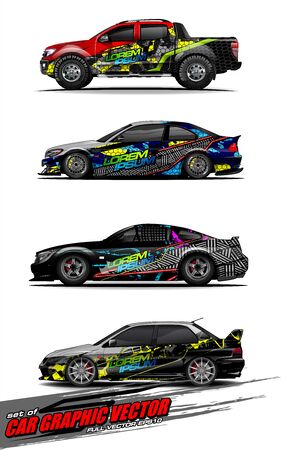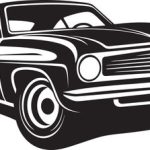1. The Origins of NASCAR
NASCARs roots can be traced back to the Prohibition era, when moonshiners needed fast cars to outrun law enforcement. These bootleggers modified their vehicles for speed and handling, leading to informal races that eventually evolved into organized competitions.
From Bootlegging to Racing
During the 1920s and 1930s, illegal alcohol distributors—known as moonshiners—relied on high-performance stock cars to evade the authorities. Over time, these skilled drivers began competing against each other, testing their cars and skills on dirt tracks across the southeastern United States.
The Formation of NASCAR
By the late 1940s, stock car racing had gained popularity, but there was no national organization to establish rules and regulations. In 1947, racing promoter Bill France Sr. brought together drivers, mechanics, and promoters in Daytona Beach, Florida, to discuss the future of the sport. This led to the formation of the National Association for Stock Car Auto Racing (NASCAR) on February 21, 1948.
Key Figures in NASCARs Founding
| Name | Role |
|---|---|
| Bill France Sr. | Founder and first president of NASCAR |
| Red Byron | First NASCAR champion in 1949 |
| Ray Parks | Early team owner who helped establish NASCAR |
The First Official NASCAR Race
On June 19, 1949, NASCAR held its first “Strictly Stock” race in Charlotte, North Carolina. This race marked the beginning of the professional stock car racing era, and it laid the foundation for what would become one of Americas most beloved motorsports.
2. The Rise of Stock Car Racing
During the 1950s and 1960s, NASCAR experienced a massive surge in popularity. What started as a Southern tradition quickly spread across the United States, captivating racing fans with fast cars, daring drivers, and thrilling finishes. Several key factors contributed to NASCAR’s rise, including legendary personalities and expanding racetracks.
Legendary Drivers Who Shaped NASCAR
As NASCAR grew, so did its roster of legendary drivers. These racers became household names, drawing massive crowds and elevating the sport to new heights.
| Driver | Achievements | Impact on NASCAR |
|---|---|---|
| Richard Petty | 200 career wins, 7 championships | Nicknamed “The King,” he set records that still stand today |
| Junior Johnson | 50 career wins | Brought aggressive driving style and later became a successful team owner |
| David Pearson | 105 career wins, 3 championships | Known for his rivalry with Petty, making races more intense |
The Expansion of NASCAR Tracks
During this era, NASCARs influence extended beyond the Southeast, with new speedways being built to accommodate growing audiences. This expansion helped NASCAR transition from a regional pastime to a national sensation.
Key Tracks That Boosted NASCAR’s Popularity
- Daytona International Speedway (Opened in 1959) – Hosted the iconic Daytona 500, NASCAR’s premier race
- Talladega Superspeedway (Opened in 1969) – Known for its high speeds and unpredictable finishes
- Charlotte Motor Speedway (Opened in 1960) – One of the first tracks to emphasize night racing
NASCAR’s Growing Fanbase
With exciting races and charismatic stars, NASCAR attracted a dedicated fanbase. The sports appeal extended beyond local fans, with national television coverage beginning to spotlight major events, ensuring NASCAR’s place in American sports culture.

3. Three, NASCARs Cultural Impact
Examining NASCARs deep-rooted influence on American culture, from Southern traditions to mainstream media exposure and sponsorship deals.
Southern Roots and American Identity
NASCAR was born in the American South, where stock car racing emerged from the Prohibition era and local moonshiners modifying their cars to outrun law enforcement. This connection to Southern culture remains strong today, with iconic tracks in states like Alabama, North Carolina, and Tennessee hosting some of the sport’s most thrilling races.
Southern Influence in NASCAR
| Aspect | Impact |
|---|---|
| Regional Fanbase | NASCAR remains deeply popular across Southern states, with die-hard loyal fans. |
| Historic Tracks | Raceways such as Talladega Superspeedway and Daytona International Speedway define the sport’s heritage. |
| Traditions | Pre-race prayers, country music performances, and tailgating are longstanding customs at NASCAR events. |
Influence on Mainstream Media
Over the decades, NASCAR has expanded beyond its Southern origins and become a significant part of American popular culture. Movies like Talladega Nights: The Ballad of Ricky Bobby and documentaries about legendary drivers have brought stock car racing into the mainstream. Television networks like FOX and NBC broadcast races to millions of viewers, making household names out of drivers and teams.
How NASCAR Reached Pop Culture
- Movies and TV Shows: Films like Days of Thunder and appearances in series such as The Simpsons contributed to the sport’s visibility.
- Video Games: Classic titles such as NASCAR Thunder helped younger audiences connect with the sport.
- Music Influence: Country and rock artists frequently reference NASCAR, reinforcing its cultural ties.
The Power of Sponsorship and Branding
NASCAR’s commercialization has played a huge role in its popularity. Major brands invest millions into sponsorships, putting their names on cars, race suits, and billboards at every track. The relationship between NASCAR and corporate America is one of the strongest in professional sports, with brands like Coca-Cola, McDonald’s, and Home Depot benefiting from the sport’s loyal fanbase.
Notable NASCAR Sponsorships
| Brand | Role in NASCAR |
|---|---|
| Budweiser | Longtime sponsor of legendary drivers like Dale Earnhardt Jr. |
| M&Ms | Major sponsor of teams, including Kyle Busch’s car. |
| Goodyear | Official tire supplier for NASCAR racing since 1954. |
NASCARs ability to fuse regional traditions with national-level entertainment and corporate backing has helped it remain a cultural powerhouse in the racing world.
4. Technological Advancements and Safety Innovations
NASCAR has continuously evolved to enhance both performance and safety. Over the years, the sport has implemented numerous technological improvements, ensuring that races remain competitive while prioritizing driver safety. Below, we explore some key advancements that have shaped NASCAR as a cornerstone of American motorsports.
Enhanced Safety Measures
Driver safety has always been a priority in NASCAR, especially after high-profile accidents. The introduction of improved safety measures has significantly reduced serious injuries and fatalities. Here are some of the most impactful innovations:
| Safety Innovation | Description | Year Introduced |
|---|---|---|
| HANS Device | A head and neck support system that reduces severe head injuries during crashes. | 2001 |
| SAFER Barriers | Energy-absorbing walls that reduce the impact force during collisions. | 2002 |
| Car of Tomorrow | An updated car design aimed at improving crash resistance and driver safety. | 2007 |
| Gen 7 Car | A modern car design with improved safety features, including better impact absorption. | 2022 |
Aerodynamic Innovations
Aerodynamics play a crucial role in NASCAR, helping cars achieve higher speeds while maintaining stability on the track. Over the decades, engineers have refined vehicle designs to balance speed and control.
Key Aerodynamic Changes
- Introduction of rear spoilers for better downforce.
- Redesigned front splitters to improve handling.
- Implementation of roof flaps to prevent airborne crashes.
Modern Vehicle Technology
As NASCAR continues to push technological boundaries, the cars themselves have undergone significant upgrades. The shift to Next Gen cars in 2022 introduced a variety of improvements, including:
- Independent rear suspension for better handling.
- Sequential gearboxes replacing H-pattern manual transmissions.
- Wider tires for improved grip and durability.
- Composite bodies that make cars more resistant to damage.
The Evolution of NASCAR Through Innovation
From safety innovations to technological enhancements, NASCAR has embraced change to improve racing while protecting its drivers. As the sport continues to evolve, fans can expect even more advancements that will shape the future of American motorsports.
5. Five, The Future of NASCAR
As NASCAR continues to evolve, the sport faces both challenges and opportunities. To stay relevant and expand its fan base, NASCAR is focusing on key areas such as diversity initiatives, sustainability efforts, and adapting to modern entertainment trends.
Diversity Initiatives
NASCAR has been working to make the sport more inclusive. Traditionally dominated by a specific demographic, the organization is now taking steps to welcome a more diverse range of drivers, crew members, and fans.
Efforts to Improve Diversity
| Initiative | Description |
|---|---|
| Drive for Diversity | A program to recruit minority and female drivers and crew members. |
| Hiring Initiatives | Encouraging teams to develop more diverse hiring practices. |
| Community Outreach | Partnering with organizations to introduce NASCAR to diverse communities. |
Sustainability Efforts
Like many industries, NASCAR is addressing environmental concerns. The sport has been exploring ways to reduce its carbon footprint and promote sustainability.
Steps Toward Sustainability
- Transitioning to more fuel-efficient and alternative-fuel cars.
- Implementing recycling programs at racetracks.
- Utilizing solar energy to power racing facilities.
Adapting to Modern Entertainment Trends
The way people consume sports is changing, and NASCAR is making adjustments to keep pace. Shorter attention spans and digital media have influenced the way races are broadcast and marketed.
Modernization Strategies
- Enhanced digital fan engagement through social media and streaming services.
- Shorter race formats to attract younger audiences.
- Incorporating esports with NASCAR’s virtual racing series.
By focusing on diversity, sustainability, and adapting to new entertainment trends, NASCAR is positioning itself for a bright future while maintaining its historic roots in American motorsports.


